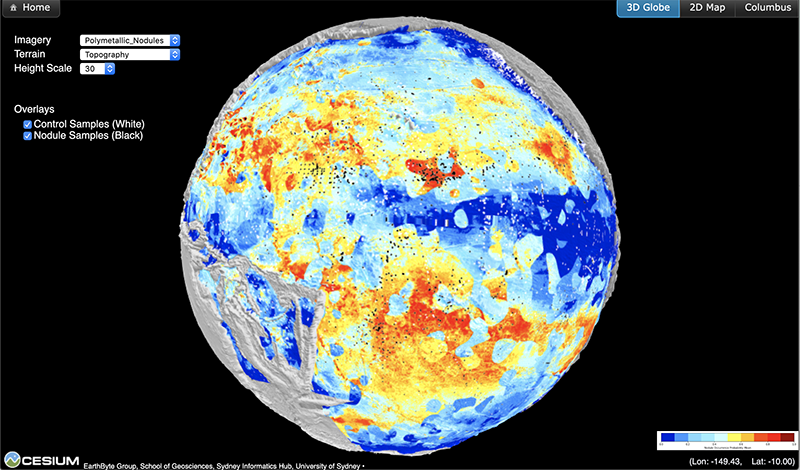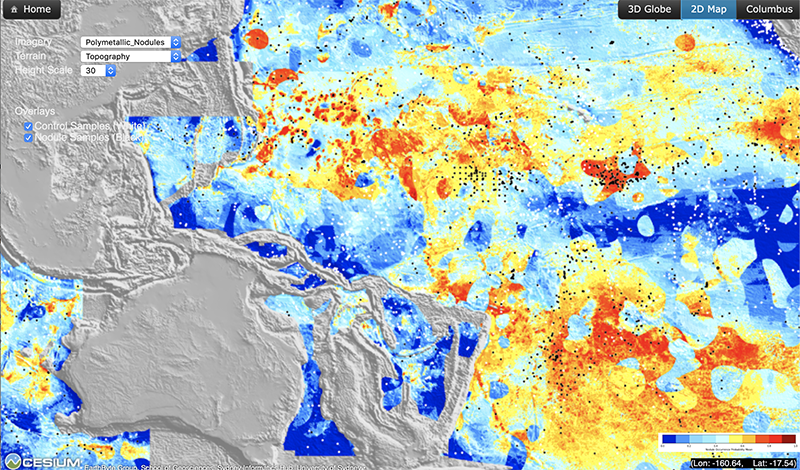Polymetallic Nodules
Polymetallic nodules found on the abyssal plains of the oceans represent one of the slowest known geological processes, and are a source of critical and rare metals for frontier technologies. A quantitative assessment of their occurrence world-wide has been hampered by a research focus on the north-east Pacific Ocean, and the lack of a global open-access dataset of nodules. We have compiled a global dataset of over 10,000 seabed nodule and control samples, and combine it with digital grids of key environmental parameters to generate a predictive machine learning model of nodule occurrence. In order of decreasing parameter ranking, we find that nodules are associated with very low sedimentation rates (< 0.5 cm/ky), moderately high oxygen values (150 and 210 mmol/m3), lithologies of clay followed by calcareous ooze, low summer surface productivity (< 300 mgC/m2/day), low benthic biomass concentration (< 1 log mgC/m2), water depths > 4500 m, and low total organic carbon content (0.3–0.5 wt%). Competing hypotheses for nodule sustention and thus continued growth on the seafloor are the removal of sediment by bottom water currents and biological activity. Using a high-resolution eddy-resolving ocean circulation model we find that the bottom current speeds over nodule fields are too low (< 5 cm/s) to remove sediment, implicating the activity of epibenthic megafauna as the most likely mechanism. Our global nodule probability map combined with the assessment of a range of environmental drivers provides an improved basis for decision and policy making in the controversial area of deep-sea exploration.
Note that medium grey regions reflect missing data in one or more of the environmental grids used in the analysis.
The data that support the findings of this study are available from https://github.com/EarthByte/nodules, together with the workflow in the form of a Jupyter Notebook.
View Polymetallic Nodules Map on 3D Globe
Reference:
- Dutkiewicz, A., Judge, A., Müller R.D., 2020, Environmental predictors of deep-sea polymetallic nodule occurrence in the global ocean, Geology. doi:10.1130/G46836.1 The supplementary information is available here.

